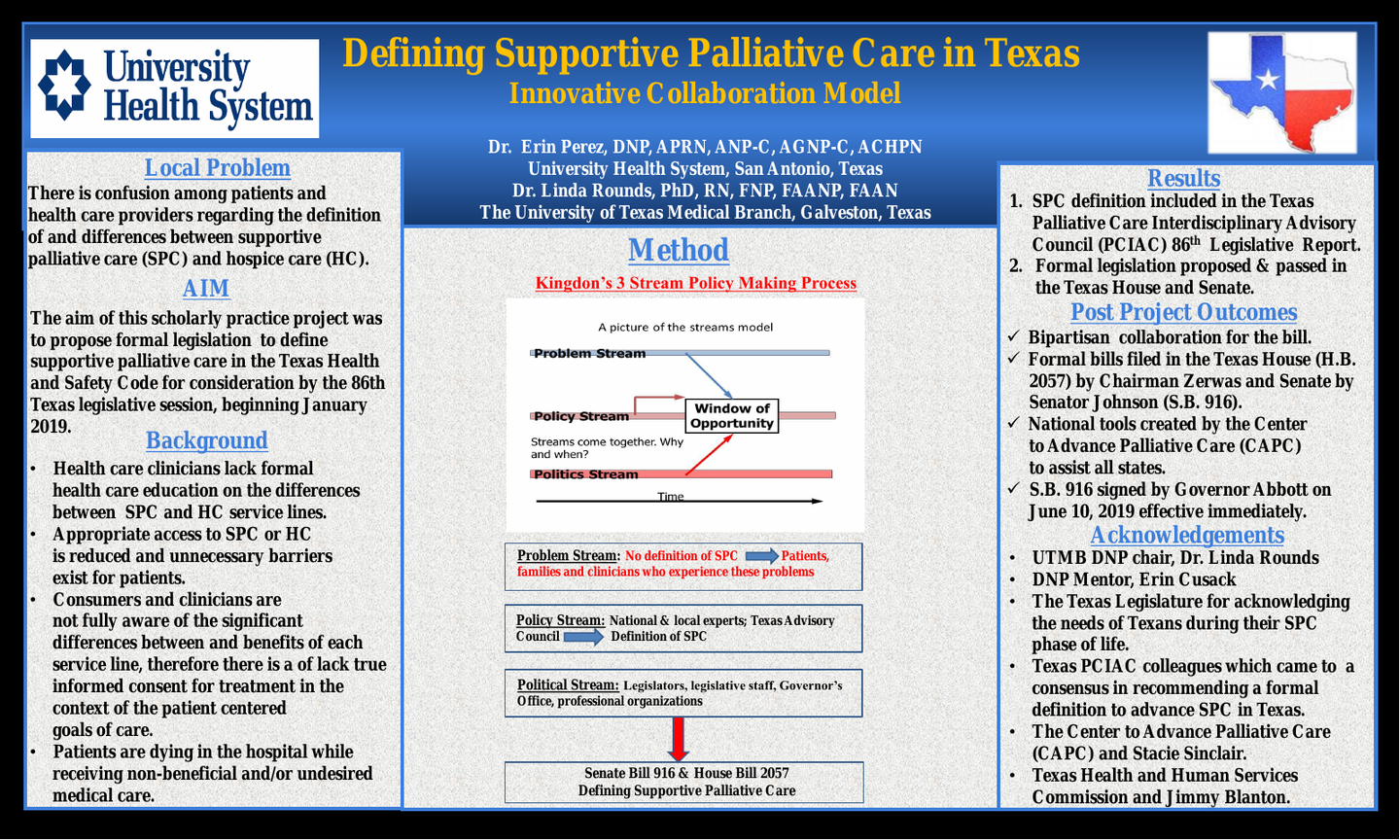Defining Supportive Palliative Care in Texas
There is ongoing confusion regarding the definition and differences between supportive palliative care (SPC) and hospice care (HC) among clinicians and patients. To address this problem, palliative care champions in Texas used Kingdon’s "Three Stream Policy Making Process” to develop proposed legislation to define SPC in the state.
The problem stream (generally considered the first component of Kingdon’s model, the identification of an issue or problem) required articulating that patients, families, and clinicians who face health and practice consequences due to the confusion and lack of knowledge regarding SPC. Misconceptions of SPC have resulted in an identity crisis for the field, and necessitated a national movement to educate clinicians and consumers on the benefits of SPC, and how it is distinct from HC. Yet these educational efforts fall short – often, hospitalized patients die in the hospital while receiving non-beneficial and/or undesired medical care. Given the high symptom burden and the high associated costs of medical care, all parties may be left with physical, emotional, spiritual, and financial distress.
The political stream (i.e., the effort to convene relevant and/or invested stakeholders to generate and debate proposals) involved seeking support from other professionals – particularly legislators and legislative staff, the Governor’s Office, and palliative care experts from Texas and other states. Among the many proposals introduced was the idea to formulate a relevant and meaningful definition of SPC.
The policy stream (i.e., the identification of a short list of policy proposals submitted by relevant stakeholders) required coming to a general agreement that clearly defining SPC and distinguishing it from HC as an independently recognized service line, was the correct next step in ensuring earlier access to SPC. This included the development of formal proposed legislation, which was then presented to the 86th Texas Legislature with support from professional organizations.
The policy window (i.e., the time frame when the problem, and the political and policy streams converge in a political climate of opportunity for actionable health policy change) required a desire by experts to modify regulations, motivated individuals who would champion the change, and an in-session legislature open to new ideas. The SPC champions had to be astute and navigate the variables of public understanding, constituent and legislative agendas in combination with political elections, party dynamics and special interest stakeholders.
This poster presentation will provide an overview of a policy change process using Kingdon’s Three Steam Policy Making Process and an example of how Doctor of Nursing Practice (DNP) prepared Advanced Practice Registered Nurses (APRNs) can positively impact health care policy. The poster will provide an example of effective health care policy and advocacy while educating, engaging, and empowering interprofessional collaboration across the local, state, and national levels.
Author
Erin Perez, DNP, APRN, ANP-C, AGNP-C, ACHPN
Palliative Care Nurse Practitioner
University Health System
4502 Medical Drive, MS 11-1
San Antonio, TX 78233
(210) 358-0704
